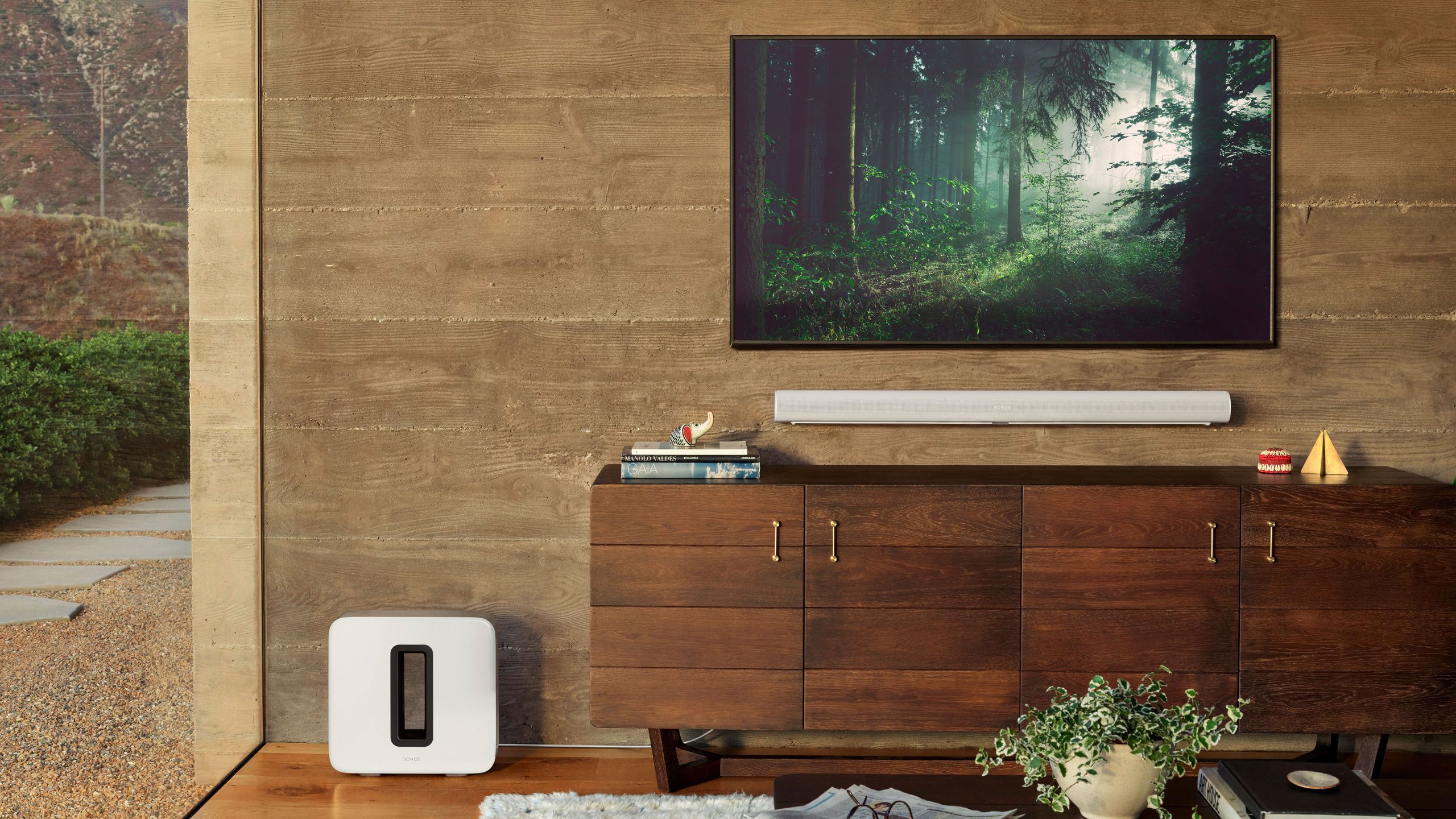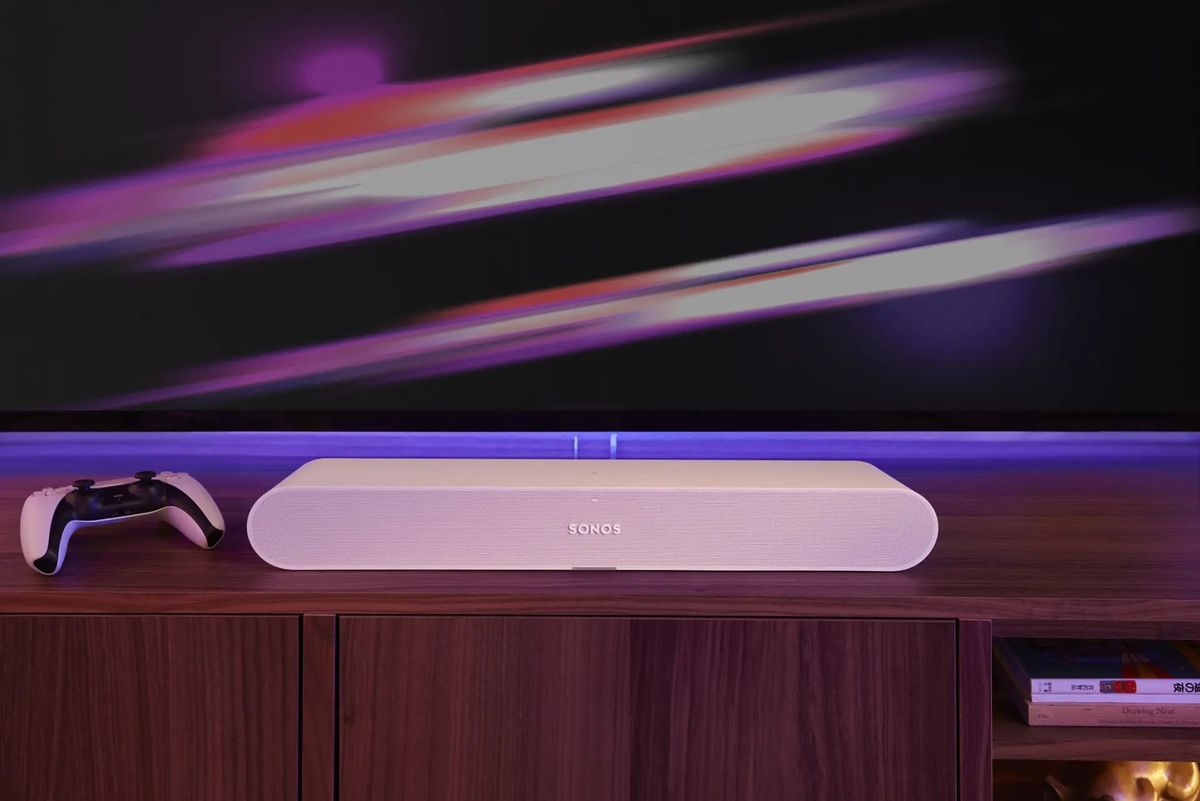Few things are sweeter than the moment you turn on a new TV. Mounted on the wall or balanced on a media unit, when the lights come on and – after a short while of logging into all your many streaming services – the images start playing.
So it’s a shame that the average TV – even the good-looking one – often can’t keep up when it comes to sound. And if you bought one The best 4K TVs Over the holidays, you might want to consider complementing your purchase with a soundbar.
Good audio is often an afterthought TV brandswhich mainly focus on image processing and panel quality as the main indicators of success. Cheap TVs can come with tinny 10W stereo sound or chunky inserted bass, meaning a dedicated audio solution can vastly improve the quality of the sound on offer.
Even high-spec models like that LG C2 OLEDthat excel in the picture department can’t offer quite the same experience when it comes to their speakers. The C-Series OLED packs 40W of power with 3.1.2-channel speakers, but that’s still a fraction of what’s possible with an expanded audio setup.
Of course, some TVs are better than others in this regard. Samsung’s OTS (Object Tracking Sound) speaker arrays pack multiple drivers into their high-end, Neo QLED Models that offer a type of built-in surround sound that is coordinated with what is happening on the screen. And in general, the fancier the TV you buy, the better the built-in audio.
But most TV buyers will find that their audio is likely on the thin side and you won’t have to break the bank to fix it.
A sound world
It’s hard to articulate how much of a difference good audio makes to a viewing experience. While it might not be all that crucial for the 10 o’clock news, a Netflix movie or nature documentary can be taken to new heights with the audio detail that a good soundbar is capable of: the creak of a floorboard, the patter of raindrops on one Leaf, the subliminal rumble of a distant explosion, or the crackle in someone’s voice while arguing with their lover.
All of these things can be overlooked in simple audio setups, robbing us of the complex sound design and engaging music that directors and composers intended for the content on your screen.
The extra width and height of multi-channel soundbars can also help position the sound in its environment – one of Samsung’s early OTS demos showed a volley of darts descending on a battlefield, with the air whip around each projectile becoming more solid and closer to the viewer each moment came.
But you don’t have to be an audiophile to take advantage of this. Plug-and-play soundbars are simple additions to a home theater setup that connect via an HDMI port and add additional sonic impact to movie, TV show, documentary and news soundtracks.
Flexible connections

Standard stereo audio effectively has two channels – right and left. That’s nothing compared to the extensive driver arrays you can get in a soundbar, from smaller 3.1.2 channel setups to 7.1.2 surround sound that lets you hear all the highs, lows and mids, that you can possibly squeeze out of movie soundtracks.
What does 7.1.2 even mean, you ask? The first number “7” is the number of main speakers involved, while the second number “1” is the number of subwoofers and the last number “2” is the number of upward-firing speakers. Generally you want that first number as high as possible, but a quality speaker with fewer channels should still be worth it – as long as it actually improves the performance of your TV display’s built-in drivers.
A major advantage of a soundbar is that it’s not built directly into the TV – meaning you can move it between different screens, in different rooms or around the home, all while having an audio kit that can outlast a TV upgrade. Just because you’re trading in an old LCD screen for a fancy new one OLEDdoesn’t mean you have to start your audio setup from scratch.
A soundbar doesn’t have to be limited to a single device either. Many models feature dedicated subwoofers or the ability to connect a variety of other speakers in tandem, allowing you to experiment with surround sound setups in your home theater room. They can also be used outside of the TV, often with Wi-Fi or Bluetooth connections to connect to your phone to use as party speakers or similar.
What you need in a soundbar

It is important to ensure that your soundbar is compatible with the specifications of a TV. With a brand new one Dolby Atmos Soundbar is well and good until you discover that your TV doesn’t support Atmos passthrough – which means a movie’s Atmos-encoded soundtrack won’t be picked up by your hardware.
Most soundbars connect via HDMI – although you’ll generally want the HDMI ARC (Audio Return Channel) specification, which allows for easy two-way communication between a TV and a soundbar. HDMI eARC (Enhanced Audio Return Channel) builds on this with improved data transmission, allowing higher quality audio to be transmitted from one device to another.
Some models like the budget Sonos Ray, use an optical digital connection instead – a common specification, but you should still make sure your TV has it before you buy it. Optical connections cannot carry quite the same amount of audio information as they can HDMI ARC or eARC, and do not support immersive formats such as Dolby Atmos. So if you want to hear Dolby Atmos or DTS:X soundtracks, you’ll need to opt for one of the HDMI standards – specifically HDMI eARC to hear them at their best, uncompressed state.
Which soundbar should I buy?
Your budget for a soundbar will depend on how important enhanced audio is to you, as the price of a soundbar can be as high or as low as almost any TV on the market today.
To help you choose, we’ve put together a mix of best sound bar We’ve seen at each budget below.





